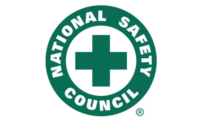Safety and health at work is something many of us take for granted. Yet the International Labour Organization (ILO) attributes close to three million deaths each year to workplace accidents or illness. The figure is alarming at both an individual and organizational level. Occupational safety and health (OSH) issues inevitably reduce wider staff morale and retention and hurt financial performance. For the sake of its employees and its own health as a business, it is vital for an organization to do everything in its power to maximize OSH at the workplace.
More companies are realizing the pressing need to improve their OSH standards. A report on the workplace safety sector by MarketsandMarkets predicts that the value of the global OSH sector will almost double to $26.7 billion by 2027.
Robust workplace health and safety is closely linked to effective teamwork and high levels of efficiency. In parallel to the growth of the OSH industry, research firm IDC foresees a 20% rise in revenue by 2024 for companies that offer frontline workers democratized access to digital collaboration, process automation and related tools due to improved productivity. It also predicts that digital-first operations enabled by 5G connectivity will help reduce work-related accidents by 20% by 2024.
Increased investment in OSH reflects the acknowledgement that high-risk industrial businesses need the most advanced solutions to function effectively and protect their workforce. Spending alone will not solve the issue, however. Apart from limited resources, challenges that organizations face include gaps in regulatory compliance, training and upskilling or reskilling programs, as well as safety culture and leadership. Creating the right foundation depends on an organization's ability to bridge these gaps.
Then there is the challenge of implementing the right technology. Organizations recognize that technology can go a long way to raising safety levels. But according to the National Safety Council (NSC), many lack information about the range of technology available to them and best practice examples of how it has been used successfully to serve as a guide.
A crowded market can be a minefield, and expert consulting can help channel resources strategically, ensuring the right balance between hardware and software for frontline workers. Ultimately, what they need is fast-tracked access to information and seamless communication, data collection and analysis that is automated wherever possible.
With a combination of advanced rugged computing devices, software, accessories and crucially, professional services, it can optimize industry-specific solutions to tackle real-world challenges. The goal is to help those working in high-risk fields to focus on the task at hand with maximum safety and minimum consideration for technology.
One example concerns driver safety. A quarter of all deaths on EU roads involve a work vehicle. The United States sees nearly 35,000 serious injuries annually involving forklift trucks. One of the most effective ways to minimize driving accidents is to remove driving distractions. The right solution can protect drivers from in-vehicle device distractions when on the move by blanking the screen and locking the keyboard, in compliance with regional driving legislation.
Another example is around public safety and law enforcement. Industrial video solutions such as body-worn and in-car cameras play a critical role by increasing situational awareness, enabling information-sharing and providing accurate, real-time location data for emergency communications.
In the coming months, more companies engaged in heavy industrial and other demanding, dangerous work will take action to safeguard their employees and operations by moving from off-the-shelf, consumer-grade technology to advanced industrial-grade solutions. This is a positive move towards reducing the many avoidable deaths and injuries that happen in the field each year. At the same time, it bears noting that even at an industrial level, major differences exist between technologies in terms of functions and capabilities; and that implementing them effectively calls for an OSH-first organizational mindset.
IDC outlines immediate steps that companies can take to reinforce a culture of safety and set the foundation for technological support. They include conducting regular risk assessments; providing ongoing safety training; and encouraging rigorous reporting and investigation of incidents. As in a real-life emergency, the most important thing is to act fast and decisively. Doing so could mean the difference between adding to the ILO's troubling statistics or reducing them.



